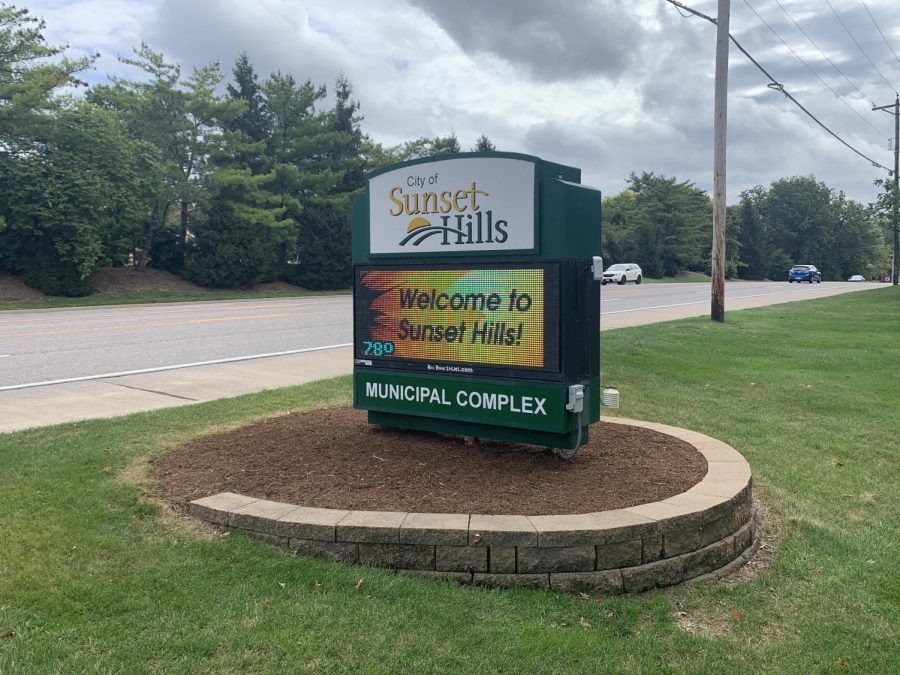The proposed trail connection to Cliff Cave County Park from Telegraph and Erb roads will be built as originally planned, Great Rivers Greenway announced last week.
The pedestrian-only entrance to the park from Telegraph Road was originally proposed as part of the regional trail district’s $5 million, 2-mile Cliff Cave trail extension, which is currently around the halfway point of construction and set to be finished by the end of the year.
At the urging of 6th District County Councilman Ernie Trakas, R-Oakville, however, the county conducted a safety study of the Telegraph entrance, where Trakas suggested building a pedestrian bridge crossing Telegraph to the trail. Trakas had been blocking the trail, but the compromise between him and County Executive Steve Stenger moved the trail forward without going through the council.
As part of a compromise brokered by county officials to try to get Trakas to advance legislation allowing trail construction to proceed, the county agreed to perform the safety study.
After reviewing the results of the traffic study, which came back Aug. 1, however, Great Rivers Greenway, or GRG, is moving forward with its original plan.
“Following the review of a safety analysis, project partners are moving forward with a planned neighborhood connection into the park at Telegraph and Erb roads,” GRG Community Program Manager Elizabeth Simons said in a project update. “This connection will allow people to walk, jog, push a stroller, ride a bike or use a wheelchair to access the park without driving a car.”
“The bridge could wind up being just a beautiful southern gateway into Oakville, where in my mind’s-eye vision it’s an arch-type of bridge with the signage ‘Welcome to Oakville, Great People, Great Parks,’ something like that,” Trakas said when he first proposed the bridge in February. “It could be a great southern entrance to Oakville.”
In response to concerns about cost, Trakas and other residents point to the pedestrian footbridges GRG has built around the region, in west county and across interstates.
The Telegraph entrance will allow neighbors to access the trail without having to drive to the main park entrance on Cliff Cave Road. GRG downsized the Telegraph entrance from its original plans so that people would not mistake the new entrance for the trailhead and drive there expecting to find a place to park. The entrance will not have any parking.
Posting on the Great Rivers Greenway Facebook page, nearby resident Patrick Mueller wrote, “Seeing that the entrance at Erb will definitely happen just made my day. As someone who lives off Erb, I can’t wait to use this access point to the park with my family.”
The new Oakville trail extension is the latest phase of a broader GRG master plan to link together trails throughout the region, including from Cliff Cave to the Gateway Arch in downtown St. Louis.
The primary contractor on the project is Oakville-based Ideal Landscape.
Equipment thefts from the contractors’ construction trucks at the parks this summer did not hold up construction.
The park was shut down from July 24 through Aug. 3 so that GRG could install the second of two new pedestrian bridges inside the park, a 210-foot span over Cliff Cave Road that will be one of the longest single-span pedestrian bridges in the St. Louis region. The first pedestrian bridge installed as part of the project, a 70-foot bridge, was installed over the creek that flows from the mouth of Cliff Cave in July.
To lower the 210-foot bridge over Cliff Cave Road, “required a carefully orchestrated ballet of cranes, trucks and contractors to bring the parts of the bridge into the park to place it over Cliff Cave Road,” GRG wrote in an email newsletter.
Both bridges are key aspects of the new trail.
The smaller footbridge will allow people to bike or walk over the Cliff Cave creek.
When complete, trail visitors will also be able to access a new Mississippi River overlook which is now under construction. The larger bridge will connect both sides of the park to the new overlook on the bluffs. Along with sweeping views of the Mississippi River, the bluff trail will have a paved path so that walkers, joggers, stroller users, bike riders and wheelchair users can see the view.
The bridges, along with the two miles of new paved trails currently in progress, will provide a handicapped-accessible connection between the upper part of Cliff Cave County Park and the existing 4.6 miles of paved trails that run through the lower section of the park.
Residents in the New England Town subdivision near the Cliff Cave trail entrance tried to stop the trail from being built for more than a year. When that didn’t work, they filed a lawsuit in March requesting a temporary restraining order for environmental reasons, citing construction’s potential effect on the bats that emerge from the caves every spring and on their view from their houses.
County Circuit Court Judge David Lee Vincent III denied the request for a temporary restraining order, or TRO, which allowed construction to begin. The neighbors’ law firm, Great Rivers Environmental Law Center, went ahead with a suit claiming that the trail had to be approved by the council since it was funded through county dollars. But County Counselor Peter Krane and GRG maintained that funds came from GRG, not the county.
A month later, Vincent dismissed the suit altogether, ruling that Oakville neighbors Kenneth Elliott and Joan and Nicholas Steska had no standing to stop the trail by suing the county because the county is not funding the project.
Attorneys for the environmental law firm then filed paperwork asking Vincent to reconsider his ruling in light of documentation that the county was paying for some aspects of the trail through maintenance and mileage costs to public officials. Bypassing the council was illegal, attorneys argued.
“The court’s finding that plaintiffs lack standing and the court’s refusal to exercise its role as a check and balance on the executive branch leaves the county free to break the law at will,” the petition for reconsideration contended.
Vincent held several hearings related to the Cliff Cave lawsuit in his chambers, and his bailiff would not allow a Call reporter to attend. He denied reconsideration of the suit in a hearing held in his chambers, stating that he did not have jurisdiction to hear the motion to reconsider even if attorneys could offer new evidence of county funding.
Using expense reports of parks officials including Parks Director Gary Bess, Great Rivers attorney Kathleen Henry argued that the county was paying mileage to park officials related to the new trail, which meant that they were spending money on the trail.
“He decided that he couldn’t reconsider the case since he said we didn’t have standing,” Henry said. “I don’t agree with his analysis.”






















